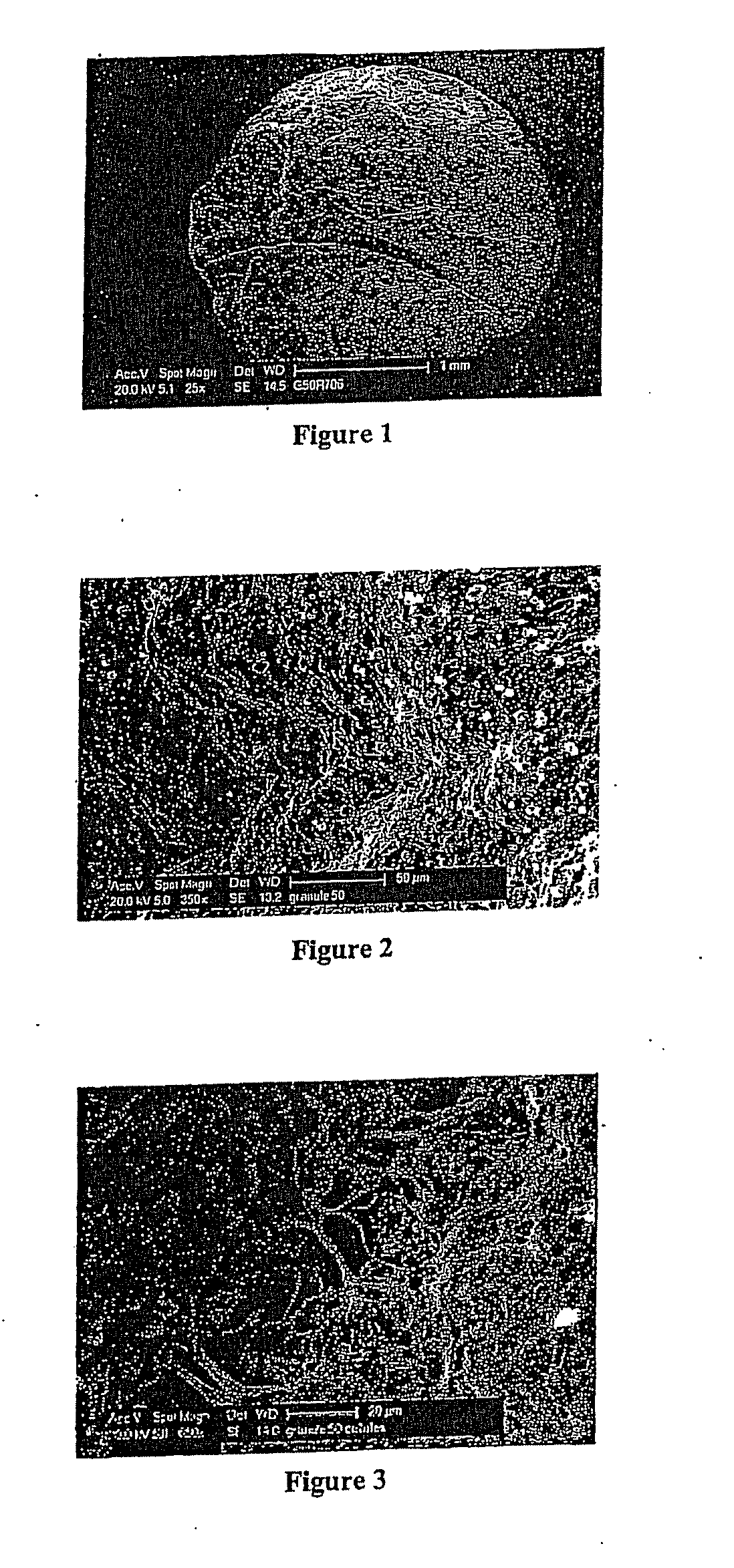Method for preparing a composite material, resulting material and use thereof
a composite material and resulting material technology, applied in the field of preparing a composite material and resulting material, can solve the problems of material unsatisfactory when used in the fabrication of implantable medical devices, material is difficult to process by known processing methods, and normal operation of the machin
- Summary
- Abstract
- Description
- Claims
- Application Information
AI Technical Summary
Benefits of technology
Problems solved by technology
Method used
Image
Examples
example 1
Preparation of a Composite Material Having a Uniform Composition According to the Invention Comprising 50% by Weight of Ceramic Phase and 50% by Weight of Polymer Phase of the Weight of the Composite Material
[0081]The bioactive ceramic phase consists of a powder of bioactive glass comprising 45% of SiO2, 24.5% of CaO and Na2O and 6% of P2O5 in mass percentage.
[0082]This bioactive glass is obtained by the following preparation method: powders of SiO2, CaCO3, Na2CO3 and P2O5 are weighed and mixed. The mixtures are then placed in platinum crucibles and heated to 950° C. in a furnace for the first synthesis step, that is decarbonation, which lasts about 5 hours. This is followed by a second step, that is the melting of the mixtures, which takes place at 1400° C. for a period of about 4 hours. The mixture obtained is then quenched in water.
[0083]The bioactive glass thus obtained can be ground and screened having an average particle size of 3 to 4 microns. The density of the bioactive gla...
example 2
Preparation of a Composite Material Having a Uniform Composition According to the Invention Comprising 75% by Weight of Ceramic Phase and 25% by Weight of Polymer Phase of the Weight of the Composite Material
[0101]A viscous dispersion was prepared by the method of example 1, using the same bioactive glass as in example 1 and the same bioresorbable polymer as in example 1, but by respectively using 75 g of bioactive glass and 25 g of bioresorbable polymer.
[0102]The viscous dispersion was then poured directly into a water tank to obtain a cluster of precipitate comprising bioactive glass and bioresorbable polymer. The cluster of composite material obtained after this precipitation has a uniform composition, visible in FIG. 5, which is a micrograph of the surface of such a granule obtained with a type 840 A LGS scanning electron microscope from JEOL with a magnification of 147. In this micrograph, the bioactive glass particles clearly appear in the form of small white spots, uniformly ...
example 3
Fabrication of an Implantable Medical Device from the Granules Obtained in Example 1
[0105]A powder compositions of granules of composite material obtained in example 1 was poured into a transfer bowl. The composition there was mixed and heated. Thanks to the particularly uniform nature of the composition of the granules of example 1, the mechanical and heat treatment supplied a soft paste which remained uniform. This uniform, bubble-free paste was transferred in a mold toward an orifice. The paste was thrust by pressure through an orifice by a piston and filled a closed and cooled mold. In contact with the cold walls, the paste assumed the shape of the mold and solidified. The mold was then opened to extract the piece.
[0106]After stripping, finished or semi-finished products having complex shapes are obtained in a single operation.
[0107]In the same way, a powdery composition of granules of composite material having a uniform composition according to the invention and comprising 20% ...
PUM
| Property | Measurement | Unit |
|---|---|---|
| particle size distribution | aaaaa | aaaaa |
| particle size distribution | aaaaa | aaaaa |
| diameter | aaaaa | aaaaa |
Abstract
Description
Claims
Application Information
 Login to View More
Login to View More - R&D
- Intellectual Property
- Life Sciences
- Materials
- Tech Scout
- Unparalleled Data Quality
- Higher Quality Content
- 60% Fewer Hallucinations
Browse by: Latest US Patents, China's latest patents, Technical Efficacy Thesaurus, Application Domain, Technology Topic, Popular Technical Reports.
© 2025 PatSnap. All rights reserved.Legal|Privacy policy|Modern Slavery Act Transparency Statement|Sitemap|About US| Contact US: help@patsnap.com



